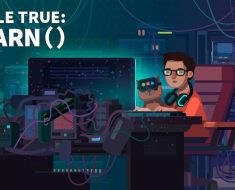Overview of Langchain and AutoGPT

When you’re navigating the world of AI agents, Langchain and AutoGPT are two names you’ll encounter frequently. Both leverage large language models for natural language processing (NLP) tasks, each with their distinct approaches and capabilities.
Langchain:
- An open-source framework that’s designed to enhance AI applications by making the integration of large language models with data sources and services more straightforward.
- It stands out for its ability to chain together different tools and services, effectively using the strengths of different AI models to drive more complex tasks.
- It’s quite modifiable, giving you freedom to tweak it to your specific needs.
AutoGPT:
- An autonomous AI agent that uses GPT-4 as its foundation.
- It’s proficient in executing code and commands, which makes it a powerful tool for automating a wide range of tasks.
- Known for its ease of set-up and immediate usability for non-developers.
Here’s a quick comparison:
| Feature | Langchain | AutoGPT |
|---|---|---|
| Basis | Framework | AI Agent |
| Language Model | Open to integration | GPT-4 |
| Open Source | Yes | Often varies |
| Target Use | Custom integration | Automation tasks |
Remember, these tools are shaping how you interact with AI. Whether you’re a developer looking to build upon existing frameworks or someone seeking a ready-made solution to streamline your workflow, both Langchain and AutoGPT present formidable options in the realm of natural language processing.
Core Features and Functionalities

When comparing LangChain and AutoGPT, you’re looking at two powerful tools in the natural language processing field with distinct capabilities and features aimed at enhancing how tasks are performed.
Langchain Capabilities
- Language Models & NLP Applications: LangChain leverages LLMS (Language Model as a Service) to allow your applications to run complex logic loops and reasoning tasks. This can be integrated into various databases and tools for advanced NLP duties.
- Developer Utilities: The toolkit includes an orchestration toolkit and a suite of utility packages designed to aid in data preparation and sentiment analysis, simplifying the process of language model training and evaluation for developers.
# LangChain example code for embedding
from langchain.llms import VectorStore
vectorstore = VectorStore()
embedding = vectorstore.get_embedding("Your text here")
- Memory & Reflection: With a focus on stateful interactions, LangChain supports memory functionalities that are essential for building autonomous agents capable of reflection and multi-step tasks.
AutoGPT’s Unique Offerings
// Example API call with AutoGPT
fetch('https://api.autogpt.com/generatetext', {
method: 'POST',
headers: {
'Content-Type': 'application/json',
'API-Key': 'your-api-key'
},
body: JSON.stringify({ prompt: "Your prompt here" })
})
.then(response => response.json())
.then(data => console.log(data));
- VectorStore & Complex Task Handling: The AutoGPT platform contains features like VectorStore, which is essential for embeddings and accurate NLP operations for more complex tasks.
Integration and Extension

In the world of autonomous AI agents, you often need to tinker with tools like LangChain and AutoGPT to incorporate new functionalities or improve existing processes. Here’s how you can go about extending LangChain and optimizing with AutoGPT.
Extending LangChain Functionality
To extend LangChain, which is an open-source project, you’ve got a variety of tools at your disposal. Imagine you want to avoid rabbit holes in when searching online – SerpAPI can help with that. You can use it along with logic loops and deduction to ensure you get the most accurate responses. Here’s a simple way to include it in your setup:
from langchain.llms import OpenAIEmbeddings
# Add the SerpAPI tool
langchain.add_tool('serpapi', SerpAPI())
Now you’re avoiding those endless rabbit holes with targeted, accurate searches.
Optimizing with AutoGPT
When you’re using AutoGPT, an autonomous AI agent, think about what you want to automate. Say you’re running an online business with a subscription management service. You’ll want a prompt that integrates tokens for user authentication seamlessly. Docker integration allows deploying your agents where you need them, keeping things running smoothly with fewer compatibility issues.
To integrate long-term memory for context-aware responses, make use of tools like readFileTool and writeFileTool. Here’s a snippet to give you an idea:
// Use AutoGPT with Docker for an isolated, scalable environment
docker run autogpt/autogpt-project
// Using long-term memory for better context management
autoGPT.useTool('readFileTool', 'writeFileTool');
By harnessing these tools, you optimize your agent to be more accurate and helpful, whether you’re generating a weather report or managing user data. Keep your agents sharp and your services top-notch!
Frequently Asked Questions
Diving into the world of AI and language models can be quite intricate, but your need for clarity is understood. Below you’ll find direct answers to some common curiosities about LangChain and AutoGPT.
What are the main differences between LangChain and AutoGPT tech?
LangChain specializes in utilizing large language models (LLMs) as decision-making agents, enhancing their ability to perform tasks by reasoning and decision-making. In contrast, AutoGPT focuses on executing code and commands, which could potentially make it more versatile for developers interested in automation and integration with other software systems. For a side-by-side feature comparison, check AutoGPT vs LangChain Features: A Comprehensive Comparison.
How does AutoGPT’s functionality compare with BabyAGI?
AutoGPT and BabyAGI both are AI-driven technologies, but they serve different purposes. AutoGPT is more about performing tasks and executing commands, while BabyAGI might be designed with a focus on simulating a form of generalized intelligence or learning. The exact functionalities can vary widely depending on the specific implementations of these technologies.
What unique features does LangChain offer compared to other language models like AgentGPT?
LangChain stands out by providing a framework that simplifies the use of LLMs as autonomous agents, integrating decision-making capabilities into the process. It may offer unique customizations or plug-ins that are not readily available with other models like AgentGPT. For insights into LangChain’s unique offerings, take a look at thoughts on LangChain and its decision-making capabilities.
Is LangChain a better tool for search and data retrieval than Haystack?
LangChain’s advantage lies in its agent-oriented approach and decision-making processes, which might be more suitable for tasks that require reasoning. On the other hand, Haystack is optimized for search and data retrieval, potentially offering more refined tools in that specific domain. The choice between them would depend on your task-specific requirements.
What are some viable alternatives to LangChain for natural language understanding?
Alternatives to LangChain include various other LLMs and platforms designed for natural language processing, like OpenAI’s GPT models or Google’s BERT. Each comes with a set of features, so your decision should be based on the particularities of your project and the nature of the tasks you aim to perform.
Could you break down the pros and cons of LangChain and AutoGPT for new developers?
Sure, starting with LangChain:
Pros:
Cons:
- Might have a steeper learning curve if you’re not familiar with decision-making AI agents.
Turning to AutoGPT:
Pros:
- Strong on executing commands and code, which can be immediately useful for developers.
- Could integrate well with existing development workflows.
Cons:
- May lack advanced reasoning capabilities compared to models specifically designed for decision-making.

Emily Rosemary Collins is a tech enthusiast with a strong background in computer science, always staying up-to-date with the latest trends and innovations. Apart from her love for technology, Emily enjoys exploring the great outdoors, participating in local community events, and dedicating her free time to painting and photography. Her interests and passion for personal growth make her an engaging conversationalist and a reliable source of knowledge in the ever-evolving world of technology.



